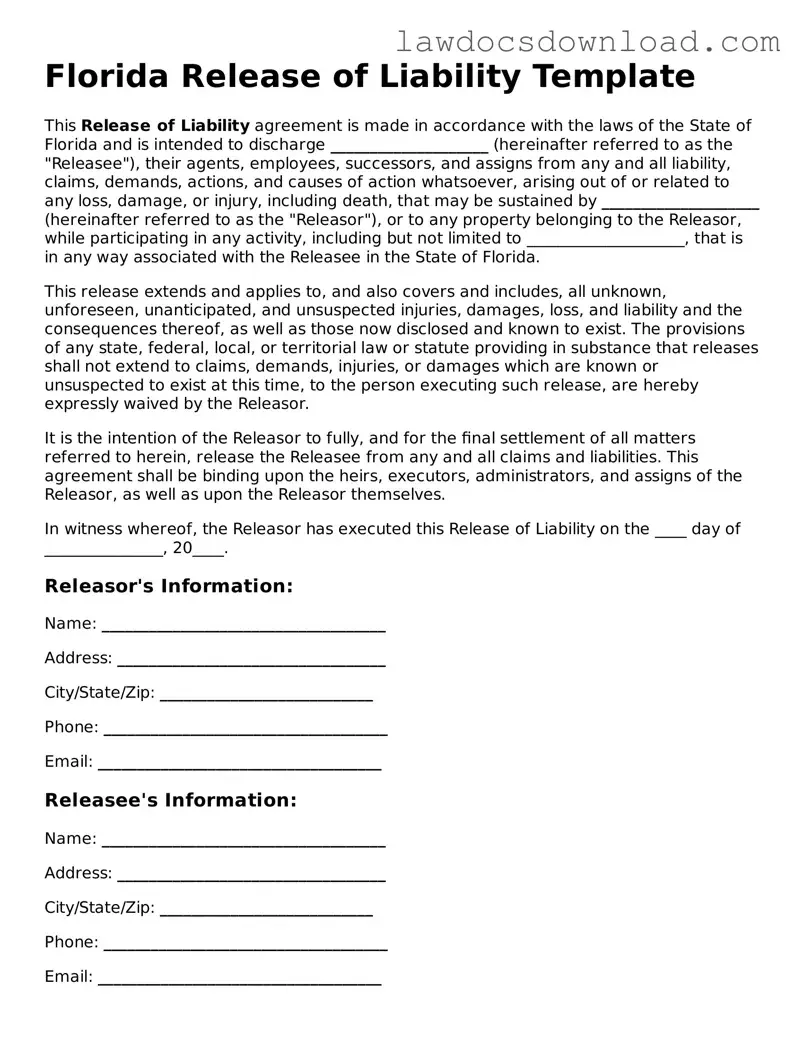Florida Release of Liability Template
This Release of Liability agreement is made in accordance with the laws of the State of Florida and is intended to discharge ____________________ (hereinafter referred to as the "Releasee"), their agents, employees, successors, and assigns from any and all liability, claims, demands, actions, and causes of action whatsoever, arising out of or related to any loss, damage, or injury, including death, that may be sustained by ____________________ (hereinafter referred to as the "Releasor"), or to any property belonging to the Releasor, while participating in any activity, including but not limited to ____________________, that is in any way associated with the Releasee in the State of Florida.
This release extends and applies to, and also covers and includes, all unknown, unforeseen, unanticipated, and unsuspected injuries, damages, loss, and liability and the consequences thereof, as well as those now disclosed and known to exist. The provisions of any state, federal, local, or territorial law or statute providing in substance that releases shall not extend to claims, demands, injuries, or damages which are known or unsuspected to exist at this time, to the person executing such release, are hereby expressly waived by the Releasor.
It is the intention of the Releasor to fully, and for the final settlement of all matters referred to herein, release the Releasee from any and all claims and liabilities. This agreement shall be binding upon the heirs, executors, administrators, and assigns of the Releasor, as well as upon the Releasor themselves.
In witness whereof, the Releasor has executed this Release of Liability on the ____ day of _______________, 20____.
Releasor's Information:
Name: ____________________________________
Address: __________________________________
City/State/Zip: ___________________________
Phone: ____________________________________
Email: ____________________________________
Releasee's Information:
Name: ____________________________________
Address: __________________________________
City/State/Zip: ___________________________
Phone: ____________________________________
Email: ____________________________________
Signature:
Releasor's Signature: _______________________________
Date: ___________
Releasee's Signature: _______________________________
Date: ___________
Acknowledgment by Notary Public
State of Florida)
County of __________________)
On this ____ day of ________________, 20____, before me, a Notary Public in and for said State, personally appeared ____________________________, known to me (or proved to me on the oath of ________________________) to be the person(s) described in and who executed the foregoing instrument and acknowledged that he/she/they executed the same as his/her/their free act and deed.
Notary Public's Signature: _______________________________
Printed Name: _________________________
Commission Number: ___________________
My Commission Expires: _______________
